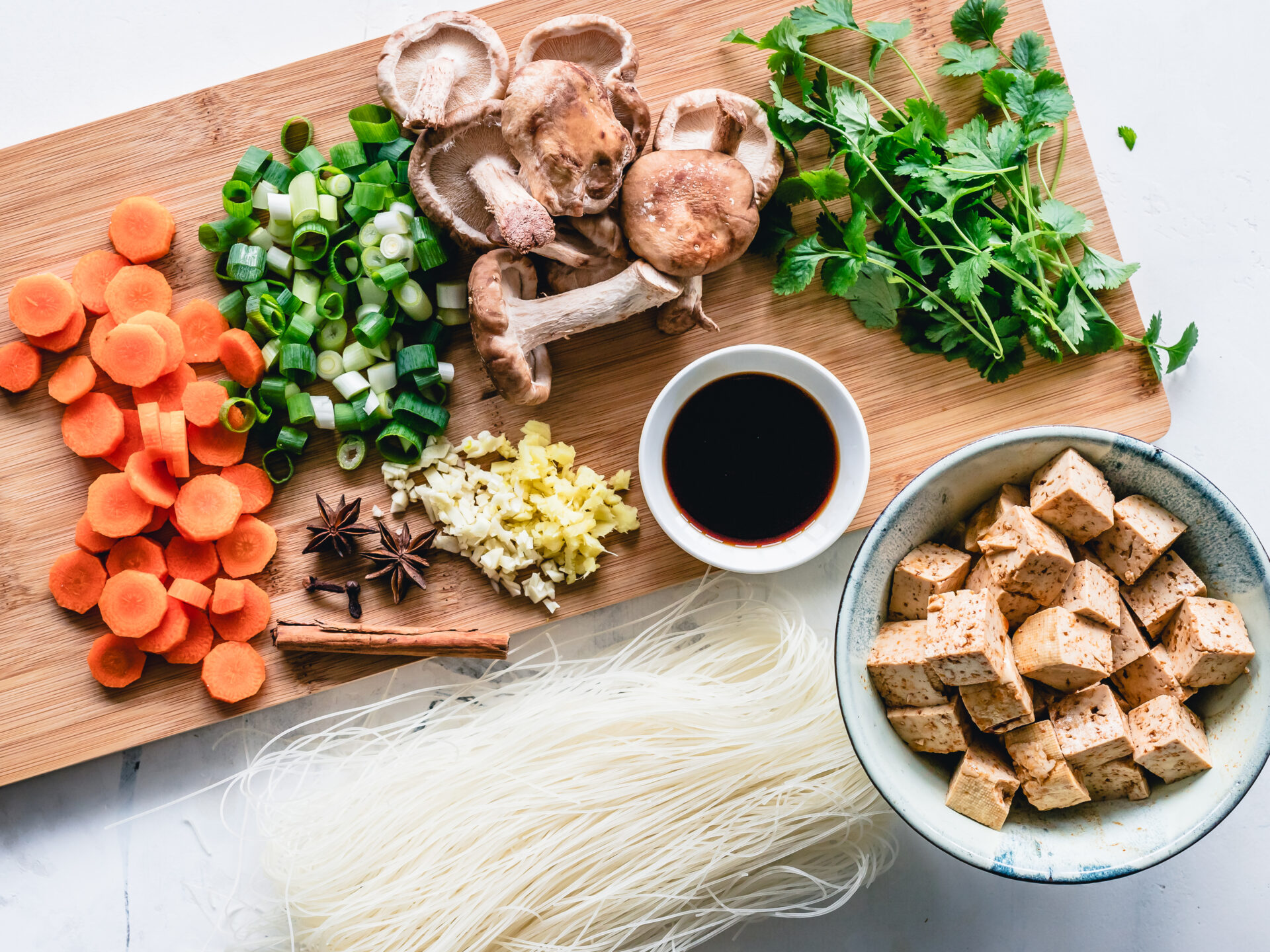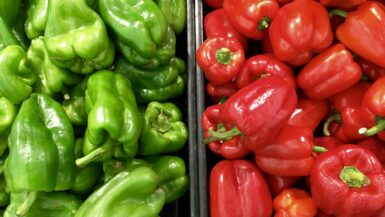Fiber is a crucial component of a healthy diet that is often overlooked. Many people are unaware of the benefits of including fiber in their daily meals, and as a result, they may not be getting enough of it. Fiber is a type of carbohydrate that is not digested by the body. Instead, it passes through the digestive system, providing many health benefits. In this article, we will explore the role of fiber in a healthy diet and why it is essential for maintaining good health. We will also discuss the different types of fiber, how much fiber you need, and the best sources of dietary fiber.
What is fiber and why is it important for our health?
Fiber is a type of carbohydrate found in plant-based foods such as fruits, vegetables, whole grains, nuts, and seeds. Unlike other carbohydrates, fiber cannot be broken down by the body and absorbed as glucose. Instead, it passes through the digestive system relatively intact, providing numerous health benefits along the way.
One of the main benefits of fiber is that it helps to keep us feeling full and satisfied after meals. This is because fiber absorbs water in the stomach, which expands the stomach and triggers signals to the brain that we are full. As a result, eating a high-fiber diet may help to reduce overall calorie intake and promote weight loss.
Fiber also plays an important role in maintaining healthy digestion. As it moves through the digestive system, fiber adds bulk to stool, making it easier to pass and preventing constipation. Additionally, fiber helps to feed the beneficial bacteria in our gut, which can improve gut health and boost immunity.
Research has also shown that a diet high in fiber may reduce the risk of chronic diseases such as heart disease, diabetes, and certain types of cancer. This is thought to be due to the fact that fiber can help to lower cholesterol levels, regulate blood sugar levels, and promote the growth of healthy gut bacteria.
Overall, fiber is an essential nutrient that plays a crucial role in maintaining overall health and wellbeing. By incorporating more fiber-rich foods into our diets, we can reap the many benefits that this nutrient has to offer.
Different types of fiber and their benefits
There are two main types of fiber: soluble and insoluble. Soluble fiber dissolves in water to form a gel-like substance, while insoluble fiber does not dissolve in water and passes through the digestive system relatively intact.
Soluble fiber is found in foods such as oats, beans, apples, and citrus fruits. It is known for its ability to lower cholesterol levels by binding to cholesterol in the digestive tract and removing it from the body. Soluble fiber also helps to regulate blood sugar levels by slowing the absorption of glucose into the bloodstream. This makes it a great choice for people with diabetes or those at risk of developing the condition.
Insoluble fiber is found in foods such as whole grains, nuts, and vegetables. It is known for its ability to add bulk to stool and promote regular bowel movements. Insoluble fiber also helps to prevent constipation and reduce the risk of colon cancer by speeding up the passage of waste through the digestive system.
Both types of fiber are important for overall health and wellbeing. Eating a diet rich in both soluble and insoluble fiber can help to promote healthy digestion, regulate blood sugar and cholesterol levels, and reduce the risk of chronic diseases.
In addition to the benefits of soluble and insoluble fiber, some foods also contain a third type of fiber called resistant starch. Resistant starch is a type of carbohydrate that resists digestion in the small intestine and instead ferments in the large intestine. This process produces short-chain fatty acids, which are beneficial for gut health and may help to reduce the risk of colon cancer. Foods that are high in resistant starch include unripe bananas, cooked and cooled potatoes, and legumes.
Overall, incorporating a variety of fiber-rich foods into your diet can provide numerous health benefits and help to keep your digestive system running smoothly.
How much fiber should we consume daily?
The recommended daily intake of fiber varies depending on age and gender. According to the American Heart Association, adult women should aim for at least 25 grams of fiber per day, while adult men should aim for at least 38 grams per day. However, most people fall short of these recommendations and consume far less fiber than they should.
Increasing your fiber intake gradually over time can help your body adjust and reduce the risk of digestive discomfort. It is also important to drink plenty of water when increasing your fiber intake to help move the fiber through your digestive system.
If you are unsure how much fiber you are currently consuming, keeping a food diary for a few days can be helpful. This will allow you to track your fiber intake and identify areas where you may need to make changes.
In addition to meeting the recommended daily intake of fiber, it is also important to consume a variety of fiber-rich foods. This will ensure that you are getting both soluble and insoluble fiber, as well as other important nutrients that are found in fiber-rich foods.
Overall, consuming an adequate amount of fiber is essential for maintaining good health and preventing chronic diseases. By making small changes to your diet and incorporating more fiber-rich foods, you can improve your overall health and wellbeing.
Foods that are high in fiber
Incorporating more fiber-rich foods into your diet can be as simple as choosing the right snacks and ingredients. Here are some of the top foods that are high in fiber:
Fruits and Vegetables
Fruits and vegetables are some of the best sources of fiber. Berries, apples, pears, oranges, bananas, carrots, broccoli, spinach, kale, and sweet potatoes are all great choices. Aim to eat a variety of colors and types of fruits and vegetables to ensure that you are getting a mix of soluble and insoluble fiber.
Whole Grains
Whole grains such as oats, quinoa, brown rice, and whole wheat pasta are all high in fiber. Look for products that list “whole grain” as the first ingredient to ensure that you are getting the most fiber possible.
Legumes
Legumes such as lentils, chickpeas, black beans, and kidney beans are a great source of both fiber and protein. They can be added to soups, salads, and stews, or used as a filling for vegetarian tacos or burritos.
Nuts and Seeds
Nuts and seeds such as almonds, chia seeds, and flax seeds are high in fiber and healthy fats. They can be added to smoothies, oatmeal, or yogurt for a boost of fiber and nutrition.
Other Fiber-Rich Foods
Other foods that are high in fiber include popcorn, dark chocolate, and even some types of seaweed.
By incorporating more of these fiber-rich foods into your diet, you can increase your fiber intake and reap the many health benefits that this nutrient has to offer.
The link between fiber and weight management
Fiber plays an important role in weight management by helping to keep us feeling full and satisfied after meals. This can reduce overall calorie intake and promote weight loss.
One study found that people who increased their fiber intake by 14 grams per day decreased their calorie intake by 10% and lost an average of 4.2 pounds over a four-month period.
Fiber also slows down the absorption of carbohydrates in the digestive system, which can help to regulate blood sugar levels and prevent spikes in insulin. This can help to reduce cravings for sugary and high-carbohydrate foods, which can contribute to weight gain.
In addition to its effects on appetite and blood sugar levels, fiber also plays a role in regulating the gut microbiome. Studies have shown that a healthy gut microbiome is associated with a lower risk of obesity and metabolic disorders.
Overall, incorporating more fiber-rich foods into your diet can be an effective strategy for weight management. By keeping you feeling full and satisfied, reducing cravings, and regulating blood sugar levels, fiber can help you achieve and maintain a healthy weight.
Fiber and digestive health
Fiber plays a crucial role in maintaining healthy digestion. It adds bulk to stool, making it easier to pass and preventing constipation. This is especially important because constipation can lead to discomfort, bloating, and even hemorrhoids.
In addition to preventing constipation, fiber can also help to promote healthy bowel movements. It does this by feeding the beneficial bacteria in the gut, which can help to improve gut health and boost immunity.
Fiber also plays a role in preventing digestive disorders such as diverticulitis, a condition in which small pouches form in the colon and become inflamed. Studies have shown that a high-fiber diet can help to prevent the formation of these pouches and reduce the risk of diverticulitis.
Overall, consuming an adequate amount of fiber is essential for maintaining healthy digestion and preventing digestive disorders. By incorporating more fiber-rich foods into your diet, you can improve your gut health and reduce the risk of constipation, diverticulitis, and other digestive problems.
Fiber and heart health
Eating a diet high in fiber has been shown to have numerous benefits for heart health. One of the main ways that fiber benefits the heart is by helping to lower cholesterol levels.
Soluble fiber, in particular, has been shown to be effective in lowering LDL (bad) cholesterol levels. This is because soluble fiber binds to cholesterol in the digestive tract and removes it from the body, preventing it from being absorbed into the bloodstream.
In addition to lowering cholesterol levels, fiber can also help to reduce blood pressure and inflammation, both of which are risk factors for heart disease. Studies have shown that people who consume a diet high in fiber have a lower risk of heart disease and stroke.
Fiber may also help to reduce the risk of developing type 2 diabetes, which is a major risk factor for heart disease. This is because fiber helps to regulate blood sugar levels and prevent spikes in insulin, which can contribute to the development of diabetes.
Overall, consuming a diet high in fiber can have numerous benefits for heart health. By lowering cholesterol levels, reducing blood pressure and inflammation, and regulating blood sugar levels, fiber can help to reduce the risk of heart disease and other chronic conditions.
Fiber and Blood Sugar Control
Fiber can also play a crucial role in managing blood sugar levels. When we eat carbohydrates, our body breaks them down into glucose, which enters the bloodstream and raises blood sugar levels. However, fiber slows down the absorption of glucose into the bloodstream, preventing spikes in blood sugar levels.
Research has shown that a diet high in fiber can improve insulin sensitivity and reduce the risk of developing type 2 diabetes. Soluble fiber, in particular, has been shown to be effective in reducing blood sugar levels. This type of fiber dissolves in water and forms a gel-like substance in the digestive tract, which slows down the absorption of glucose into the bloodstream.
Foods that are high in soluble fiber include oats, barley, legumes, and some fruits and vegetables. Incorporating these foods into your diet can help regulate blood sugar levels and reduce the risk of developing diabetes.
It’s important to note that while fiber can help regulate blood sugar levels, it’s not a replacement for medication or other diabetes management strategies. If you have diabetes, it’s essential to work with your healthcare provider to develop a comprehensive management plan that includes diet, exercise, and medication.
How to Increase Fiber Intake in Your Diet
Increasing your fiber intake can be easier than you think. Here are some simple ways to add more fiber to your diet:
1. Choose Whole Foods
Choose whole grains, fruits, vegetables, and legumes instead of processed foods. Whole foods are generally higher in fiber than processed foods.
2. Start Your Day with Fiber
Eat a high-fiber breakfast, such as oatmeal or whole-grain cereal. This can help you meet your daily fiber goals and keep you feeling full throughout the morning.
3. Snack on Fiber
Choose high-fiber snacks, such as fresh fruit, nuts, or raw vegetables. These snacks can help you meet your daily fiber goals and keep you feeling full between meals.
4. Add Fiber to Your Meals
Add fiber to your meals by including fruits, vegetables, and whole grains. For example, add berries to your cereal, include vegetables in your stir-fry, or swap white rice for brown rice.
5. Gradually Increase Your Fiber Intake
Gradually increase your fiber intake to allow your digestive system to adjust. Start by adding one high-fiber food to your diet each day and gradually increase your intake over time.
Remember to drink plenty of water when increasing your fiber intake to prevent constipation and other digestive issues.





Leave a reply